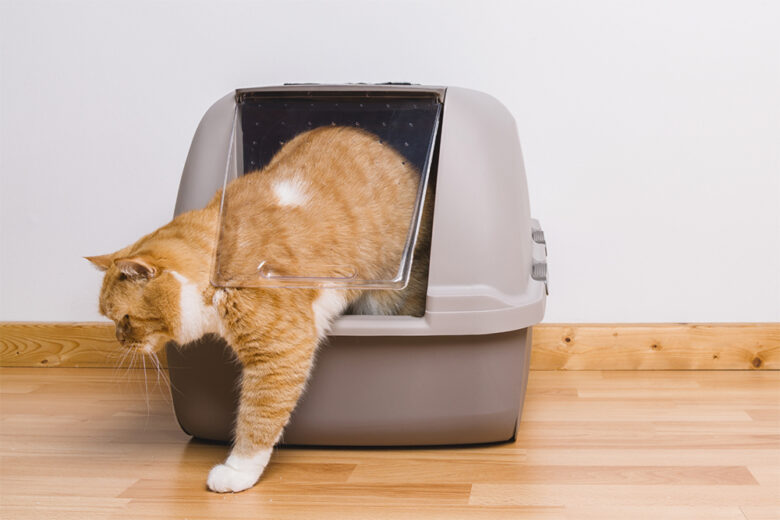It is far too generalized to state that people are either a ‘dog person’ or a ‘cat person’, but it does seem that they often have a preference and a leaning towards one or the other when talking to pet owners.
You have come to the right place for people who find themselves in the latter category, as here is everything you need to do before bringing your new cat home.
Create a Safe Space

Source: worldsbestcatlitter.com
Firstly, you will know firsthand how discombobulating it can feel when you first move home, or else leave home for the first time, and if you think about the emotions you felt at the time, this is why you need to create a safe space within your home where they can get to know their new house.
It is important to ensure their space is as private as possible, but, of course, you can access the space should you need to, and that for the first couple of weeks, nobody but you and the other members of your household enter the area.
In addition, ensure that there are no potential hazards for your cat inside, that you provide entertaining cat-specific toys, a hiding space such as a large cardboard box atop a high chair, and, of course, the comfiest cat bed you can find.
Take Out Pet Insurance
Pet insurance is absolutely essential when you have a cat or, indeed, any animal, and this relatively small payment, either monthly or annually, could save you huge amounts of money in medical costs further down the line, much like your own health insurance can.
As well as covering veterinary costs, more comprehensive pet insurance policies also include cattery fees should you be unable to look after them due to an unexpected hospital stay, theft of your pet from your home, and it could even cover treatment for various behavioral issues.
Register with a Vet
Registering your new feline friend with a cat-friendly veterinary surgery, such as Saltwater Animal Hospital, is of optimum priority, and whether you found them through a verified breeder, or else adopted them from a local shelter, it is important to book a wellness check as soon as you can.
As long as you have found your cat from an ethical establishment, the following mandatory level of care will already have been administered:
- Neutering
- Microchip fitting
- Initial pet insurance
- A health and wellbeing check
- Worm and flea treatment
Litter Box and Cat Litter

Ensuring your cat’s comfort and hygiene starts with providing a suitable litter box and cat litter. Cats have an innate instinct to use a litter box, making it an essential element in your cat’s daily life. Choose an appropriate location for the litter box, typically a quiet, accessible area where your cat can have privacy.
Regularly scoop out waste and replace the litter to maintain cleanliness and freshness. The type of cat litter matters too; some cats have preferences for clumping, non-clumping, or scented varieties, so consider your cat’s comfort when selecting the litter. By attending to your cat’s litter box needs, you’re promoting their overall well-being and ensuring a pleasant living environment.
Cat-Proofing Your Home
Creating a safe living space for your new cat is paramount to their health and safety. Cat-proofing your home involves identifying and mitigating potential hazards. Start by removing or securing items that could be harmful to your cat, such as toxic plants and chemicals.
Cats are notorious for chewing on cords and wires, so make sure these are tucked away or protected. Additionally, secure cabinets and drawers that might contain hazardous materials or substances. Block off any escape routes to prevent your cat from wandering into danger. By taking these precautions, you can provide a secure environment where your feline friend can explore without undue risk.
Identification and Collar

Source: petfinder.com
While microchipping is an excellent form of permanent identification for your cat, adding an ID collar is an extra layer of protection. A collar with an ID tag containing your contact information is a simple yet effective way to ensure your cat’s safe return if they ever get lost.
Opt for breakaway collars designed for cats, which release if the collar gets caught on an object, reducing the risk of injury. This small addition can provide peace of mind, knowing that your cat has a better chance of being reunited with you should they ever stray from home.
Regular Veterinary Care
Maintaining your cat’s health requires a commitment to regular veterinary care. Schedule routine check-ups with your veterinarian, which typically include vaccinations, dental exams, and discussions about parasite control. These visits are essential for early detection of health issues and the timely administration of preventive measures.
Your veterinarian will advise you on a vaccination schedule tailored to your cat’s needs. By staying proactive in your cat’s healthcare, you’re ensuring they have the best chance at a long, healthy life filled with love and companionship.
Socialization and Introducing New Environments

Source: nowfresh.com
Socialization is a critical aspect of helping your new cat adapt to their new home and family. Whether you have other pets or not, it’s essential to introduce your cat to their surroundings and household members gradually. Cats can be sensitive to change, so take your time. Allow your cat to explore their new environment at their own pace.
When introducing them to other pets, do so slowly and under supervision. Provide plenty of positive reinforcement, treats, and affection to build trust and reduce stress. By fostering a positive and gradual introduction, you’ll help your cat feel secure and content in their new home.
The Basic Provisions for Your New Cat
Finally, once your home is ready to welcome your new friend, you also need to make sure you have bought everything they will need to best ease their transition from where they lived before, or from when they were with their mother, to your own home.
Make sure you supply fresh, cold water constantly, as well as age-appropriate food, bowls, cat toys, a scratching post or two, cuddly toys, grooming tools, a warm and cozy bed and of course, a sturdy cat carrier.
